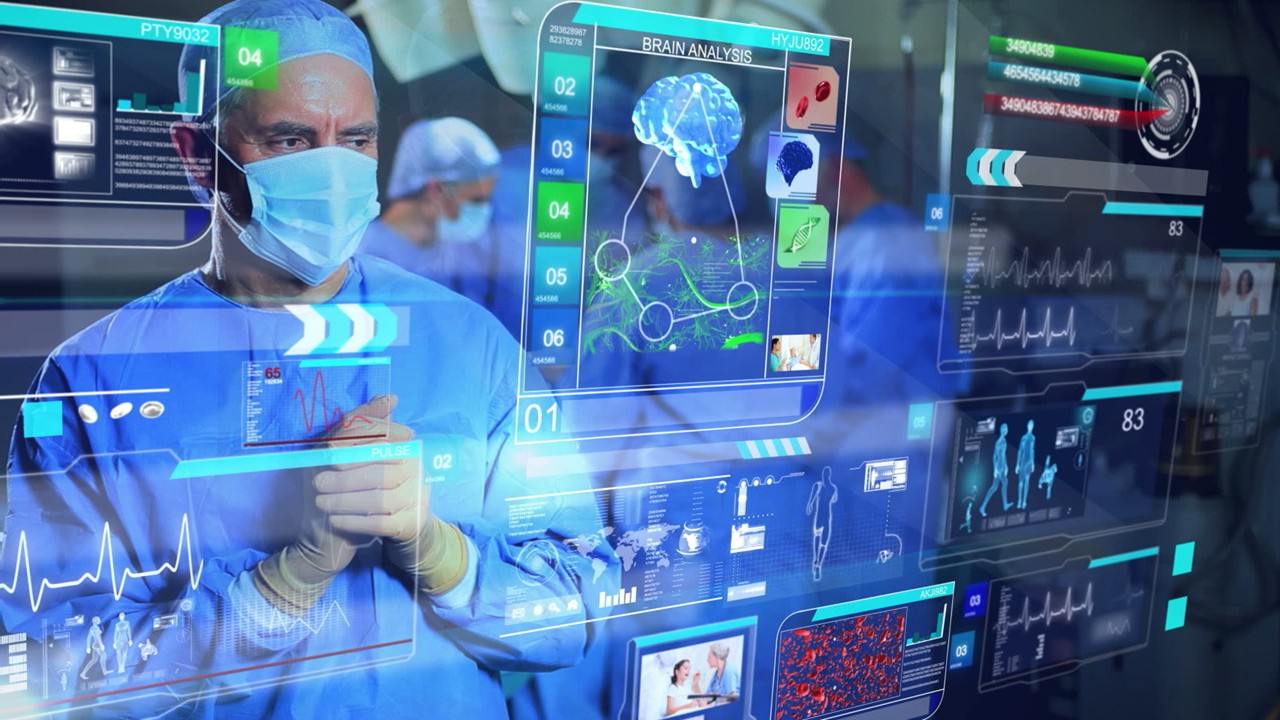About the Interviewee
Zev Wisotsky is the Senior Principal Marketing Manager at Revvity Signals.
Zev Wisotsky, B.Sc., Ph.D., brings over a decade of research experience in invertebrate and vertebrate models and more than seven years in senior roles such as Director of Value Engineering, Staff Scientist, and Business Development Manager. He excels in delivering cloud-based software solutions to biotech and pharma clients, enhancing R&D speed and efficiency through data system transformations and outsourcing strategies. Dr. Wisotsky is known for his strong project management skills, adeptness in navigating complex IT landscapes, and experience leading cross-functional teams to implement solutions and manage change. He is also proficient in conducting Biotech/Biopharma software evaluations from RFI to implementation, aligning software architecture with the needs of R&D scientists, IT managers, and executives.
Dr. Wisotsky graduated with a Bachelor of Science in Molecular, Cell, and Developmental Biology from the University of California, Santa Cruz. He finished his Doctor of Philosophy (Ph.D.) in Neuroscience from the University of California, Riverside, where he served as the President of the Neuroscience Graduate Student Association.
The Discussion
An Undeniable Passion for Science: From Academic Research to Industry Startups
[Dex Marco]: It’s such a pleasure to have you here with us today, Dr. Wisotsky. So, Zev, with more than 10 years of proven track record in benchwork and research experience in invertebrate and vertebrate models and more than 7 years of experience working in startup biotech companies as a solutions consultant, what would you say drove you towards this field, and what brought you to eventually become a Senior Principal Marketing Manager at Revvity Signals?
[Zev]: It’s great to be here, thank you. So, my journey into this field began during my PhD at the University of California, Riverside, where I studied neuroscience. Initially, my goal was to pursue a career in academia, but as I progressed, I realized that certain aspects of that lifestyle didn’t align with my long-term aspirations. I experienced what I now humorously refer to as my ‘quarter-life crisis.’ Despite feeling lost initially, I remained passionate about science and wanted to make a meaningful impact.
I discovered that I could support scientists in various ways, whether through conducting research myself or assisting them with their projects. This realization led me through several experiences in startup biotech companies, where I worked in roles ranging from solutions consulting to marketing. Along the way, I found fulfillment in helping scientists tell their stories and connecting them with products that could enhance their work. Looking back, it’s clear that my journey has been guided by my love for science and a desire to contribute to the scientific community.
Harnessing Computational Prowess, Laying the Groundwork for Predictive Analytics
[Dex Marco]: Revvity Signals Software is committed to delivering the most comprehensive suite of enterprise scientific software solutions, that provide scientists with the necessary tools to aggregate, search, mine, analyze, and visualize critical data, which leads to actionable insights in an automated, predictive, and scalable way. How can computational methods and data analytics be harnessed to facilitate the expansion of drug modalities for the treatment of emerging diseases or the enhancement of existing therapeutic approaches, considering the complex interplay of molecular interactions and physiological pathways involved?
[Zev]: Yeah, this is a really engaging question. I interpreted it as how data-capturing methods and analytics can be used to uncover biological mysteries and support drug discovery. Data is truly the currency that bridges the gap between scientists and the broader audience. Creating data without analysis is futile; it’s crucial to analyze and derive insights to guide future hypotheses. At Revvity Signals, we focus on easily generating, analyzing, and communicating datasets to support drug discovery.
Human biology is incredibly complex, and without proper data capture, tagging, and contextualization, understanding diseases and drug effects within our bodies would be impossible. Having software that can handle these tasks is essential. Furthermore, this lays the groundwork for AI support and machine learning algorithms, which can further unravel connections that may not be apparent to humans due to bias or limitations. So, setting the table with contextualized metadata enables AI and algorithms to explore further connections and possibilities that we might overlook.
Maintaining the Dynamic Equilibrium Between Relevant Models and Useful Information
[Dex Marco]: Springboarding from the previous question, what strategies and methodologies are effective in curating and contextualizing diverse datasets to serve as meaningful inputs for AI-driven drug discovery platforms, ensuring that the algorithms are trained on high-quality, relevant data rather than simply amassing vast quantities of information?
[Zev]: That’s a really valid point, and I think it’s something we all need to keep in mind – what exactly are we doing with the data as opposed to simply accumulating it? So, the first thing to consider is that there’s never really a wrong time to start thinking about your datasets and how to create a comprehensive, fair dataset. Whether you’re a small team or a large organization, the key is to start somewhere and to do it right.
Personally, I lean towards simplicity – keeping things straightforward tends to be the most parsimonious approach. While it’s tempting to include every possible piece of metadata for a sample, it’s important to remember that scientists need to be able to utilize the data effectively. So, there’s a balance between creating data models that collect everything and focusing on what’s truly useful from a human standpoint.
At Revvity Signals, we’ve encountered this balance ourselves. Initially, there might be a tendency to include an abundance of metadata, but over time, we’ve realized that simplicity often reigns supreme. It’s about finding that middle ground – capturing data that’s relevant and feasible from both a scientific and experimental standpoint.
Another interesting point to consider is the increasing role of AI and ML in drug discovery. While it may seem like a relatively new development to the general public, it’s been in use for quite some time among scientists. The recent surge in public awareness is partly due to the democratization of technologies like large language models. So, while it may seem novel to some, it’s been a part of the scientific landscape for a while now.
The Fun in Scientific Pursuit is in the Labwork, Computers are Merely Partners
[Dex Marco]: In the context of pharmaceutical R&D, what are the potential drawbacks and limitations of an over-reliance on software-based approaches, and how can a balanced approach be achieved to ensure that computational tools augment rather than overshadow the crucial role of R&D scientists in hypothesis generation, experimental design, and data interpretation?
[Zev]: I really enjoy diving into this question because it offers multiple perspectives to explore. Perhaps my take on parsimony may be an unpopular one, but I believe it applies to software as well. Essentially, less software and less time spent using said software should be the goal. This approach should support efficient data entry, contextualization, and communication within scientific teams.
It’s easy to fall into the trap of over-reliance on software solutions or the belief that adding more technology, like AI, will fix everything. However, in the specific context of Revvity Signals’ use cases, we need to be mindful. For instance, consider the daily reality of scientists – they don’t wake up eager to spend hours typing or writing in data entry interfaces. We must strike a balance to ensure that scientific work remains a joyful experience, primarily conducted at the bench or in the lab, rather than tethered to a computer screen.
Understanding the practical landscape of scientific work is crucial. Do scientists have computers readily available, or are they primarily focused on hands-on experimentation? When it comes to data capture and communication, it’s essential to consider the quality of the datasets. Simply adding algorithms or AI to flawed or incomplete data sets can lead to unreliable results. Trust in the data is paramount, as scientists are naturally curious but can’t always foresee every potential outcome.
I appreciate your mention of the enduring importance of the human element in scientific endeavors. Even in an era where AI and ML technologies are prominent, experts in fields like cheminformatics and bioinformatics possess unique insights that algorithms alone cannot replicate. Thus, the collaboration between scientists and technology remains indispensable for curating and interpreting complex datasets effectively.
A Sense of Shared Purpose: Communication’s Invaluability in STEM R&D Departments
[Dex Marco]: Considering the evolving landscape of drug discovery and development, what innovative frameworks and organizational structures can pharmaceutical companies implement to foster interdisciplinary collaboration between computational scientists, data analysts, and R&D researchers, thereby maximizing the synergy between data-driven insights and traditional scientific expertise in advancing therapeutic innovation?
[Zev]: I think it’s a truly excellent question, one that often gets overlooked. My approach to answering it boils down to a fundamental principle: ensuring that the heads or leaders of each team responsible for the various stages of the drug discovery process come together to communicate and define what I consider to be the most straightforward flow or minimum viable pathway. This encompasses everything from target identification to screening, candidate selection, and beyond.
Imagine sitting down with your favorite diagram or board software and mapping out the entire process step by step, ensuring everyone understands the critical data sets, checkpoints, and team interactions at each stage. It’s about creating a shared understanding of the workflow, including any necessary handoffs or data exchanges.
Now, I understand this ideal scenario may not always align with reality, but there’s real value in the discipline of both establishing and updating these processes regularly. It’s about ensuring that this isn’t just a one-time exercise but a living, breathing document that evolves over time. Regular check-ins, whether quarterly or biannually, help keep things on track and ensure alignment with current goals and objectives.
This approach not only supports the organization in moving forward efficiently but also fosters empathy and effective communication between teams. Understanding the bigger picture and how each team’s work fits into the larger process promotes collaboration and reduces friction points. It’s about creating an environment where teams can work together harmoniously, driving progress while also fostering a sense of camaraderie and shared purpose.
Navigating Ethics and Regulation: Data Transparency Amidst Unparalleled Technological Speed
[Dex Marco]: The power of analytics is reliant on the 3V’s: volume, velocity, and variety. Taking these three into account, how can pharmaceutical companies navigate the ethical and regulatory challenges associated with the integration of AI and big data analytics into drug discovery processes, ensuring compliance with data privacy regulations, transparency in algorithmic decision-making, and responsible use of predictive models while still driving innovation and accelerating the pace of drug development?
[Zev]: I’m genuinely optimistic about the potential here. However, as you’ve aptly pointed out, navigating the ethical and regulatory challenges won’t be a walk in the park. Fortunately, as we’ve discussed earlier, AI isn’t as novel as it may seem. The FDA’s 2021 dataset revealed over a hundred drug discovery submissions leveraging AI or ML, underscoring its longstanding presence in the field.
Despite this, we’re still in uncharted territory. The rapid experimentation with AI in drug discovery is undeniably thrilling, but it’s also a journey of discovery filled with inevitable missteps and lessons learned along the way. Our progress will hinge on our ability to learn by doing, embracing failures as opportunities for growth.
Crucially, it’s essential that we communicate these learnings openly and transparently. By sharing insights and experiences, we can collectively steer clear of costly mistakes and distractions. Ultimately, this journey toward integrating AI into drug discovery will demand constant communication and a willingness to adapt based on feedback and evolving insights.
Staying Connected, Seeking Knowledge, Supporting Science
[Dex Marco]: Zev, given your extensive experience and expertise at the intersection of science and technology, how do you envision your future roles as a Senior Principal Marketing Manager at Revvity Signals as we move beyond Industry 5.0, and what key qualities or skills do you believe will be most essential to drive the company’s success and maintain its position as a leading integrated scientific research provider in the age of data and artificial intelligence?
[Zev]: I have a somewhat broad perspective on this, but if someone were to ask me for career advice or how to continue progressing, my advice would be to stay hungry and keep learning. It’s crucial to listen to your colleagues and maintain a humble attitude. I often remind myself that no job is too small – I call this “doing the dishes.” Everyone, regardless of their position, should be willing to handle tasks like submitting tickets or reviewing documents for errors. It’s about being thorough and not considering oneself above certain tasks. I think there is a world in which AI can do your dishes; however, it is important to stay connected to know how to fix or continue without it if any technology or AI algorithm fails.
For me, staying connected with scientists who use our software to support their research is essential. This firsthand insight into their work processes, lab setups, and challenges helps me ensure that our solutions address their needs effectively. It’s about constantly evaluating whether our solutions truly solve the key challenges scientists face.
On the AI front, while it’s vital to absorb as much knowledge as possible about AI and its capabilities, it’s equally important not to overlook the importance of clean, contextualized data. The adage “garbage in, garbage out” rings true here. Without solid foundational data, any AI applications will likely yield subpar results. So, maintaining a balance between learning about AI and ensuring data quality is crucial.
Truly, there’s no perfect time to embark on this journey of continuous learning and improvement. The key is to start and remain committed to growth and development along the way.
Engr. Dex Marco Tiu Guibelondo, B.Sc. Pharm, R.Ph., B.Sc. CpE
Editor-in-Chief, PharmaFEATURES
Join Proventa International’s Drug Discovery Biology & Bioinformatics Strategy Meeting at Hard Rock Hotel San Diego, California on the 21st of May 2024 to learn more about Revvity Signals’s masterful integration of Bioinformatics, Chemistry Informatics, and Artificial Intelligence for Next-Generation Drug Discovery and Development Solutions.

Subscribe
to get our
LATEST NEWS
Related Posts

Interviews
REM-422, RNA Processing, and the Next Wave of Translational Science with Benoît Moreau, Remix Therapeutics
Benoît Moreau, Ph.D., discusses RNA-targeted drug discovery at Remix Therapeutics and the advancement of small molecules like REM-422 to tackle undruggable targets.

Interviews
Shaping Drug Discovery’s Future with Strategic Alliances and Investments with Nik Tezapsidis, Neurotez, Inc.
Dr. Nik’s cutting-edge scientific vision and chemical expertise are driving clinical trials aimed at halting AD progression and delaying cognitive decline.
Read More Articles
Coprocessed for Compression: Reengineering Metformin Hydrochloride with Hydroxypropyl Cellulose via Coprecipitation for Direct Compression Enhancement
In manufacturing, minimizing granulation lines, drying tunnels, and multiple milling stages reduces equipment costs, process footprint, and energy consumption.













